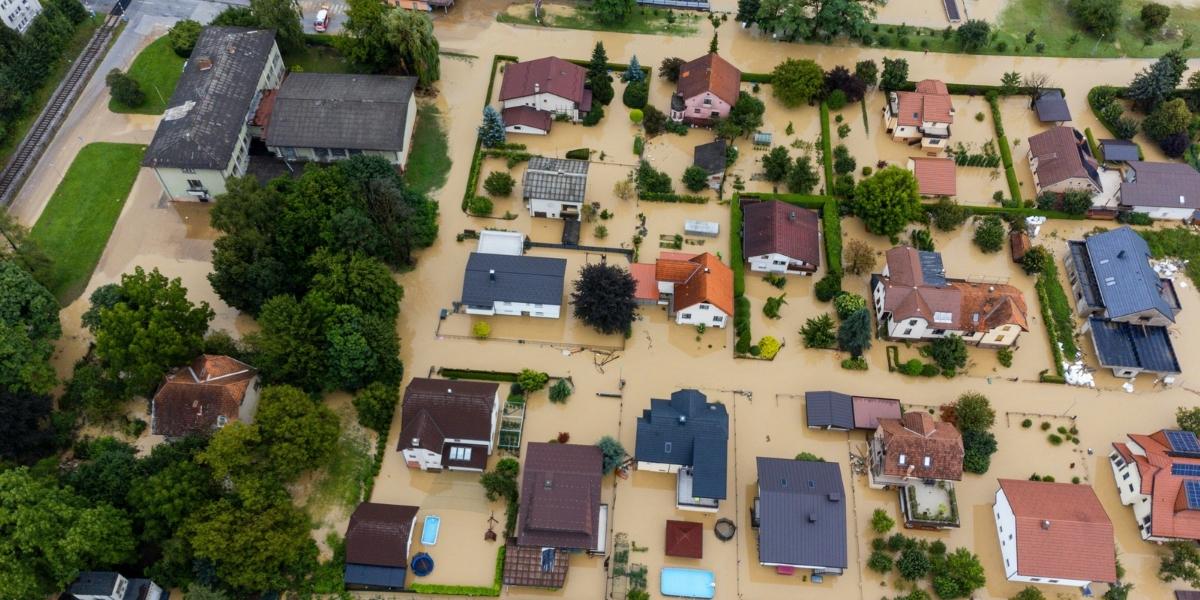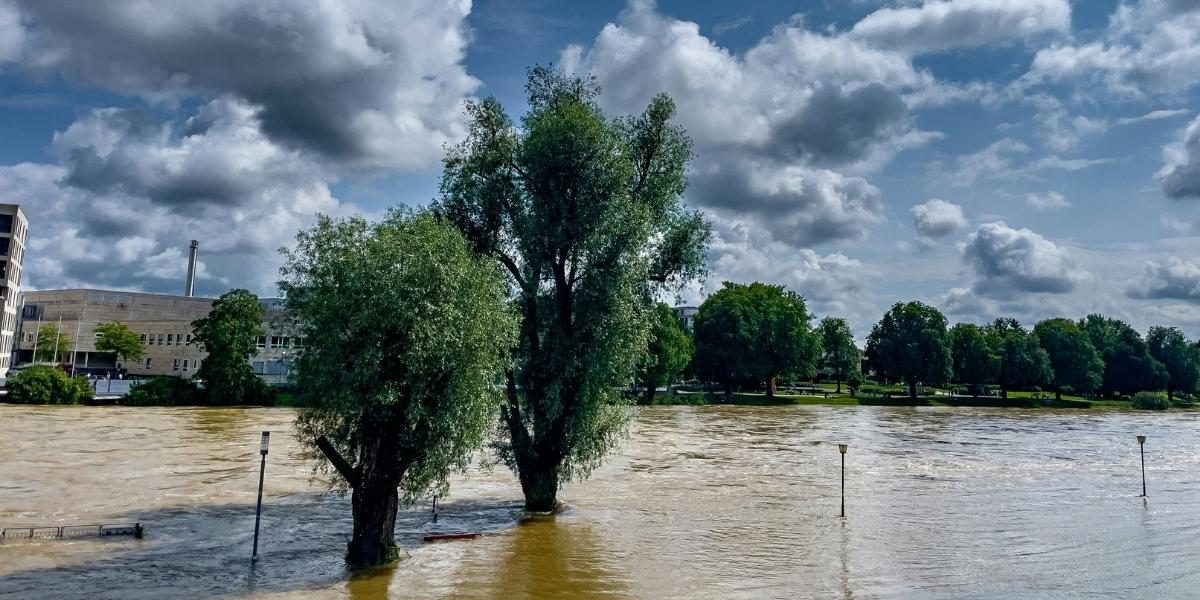What Led to the Devastating Floods in Texas?
Texas, a vast state known for its diverse climates, has faced profound challenges from recent widespread flooding. Intense, unyielding rainfall over a concentrated period overwhelmed many regions, particularly in the central and eastern parts of the state. Rivers and creeks, typically flowing within their banks, swelled with astonishing speed, transforming peaceful waterways into formidable, destructive forces. This rapid rise in water levels caught numerous communities by surprise, leading to extensive disruption and immense hardship for residents across Texas. The sheer volume of rain that descended in a matter of hours was the primary catalyst for the severe scale of these natural events.
The unique geography of certain areas in Texas, often called “Flash Flood Alley,” makes them acutely susceptible to sudden deluges. When significant precipitation occurs in these regions, the land struggles to absorb the excess water quickly, resulting in flash floods that can escalate from a trickle to a torrent in mere minutes. This inherent characteristic of the terrain, combined with the extreme weather patterns observed in recent times, created the perfect storm where major rivers like the Trinity and Colorado reached unprecedented heights. Understanding these environmental elements helps to grasp the sheer magnitude of the challenge faced by communities throughout Texas.
Read Also: Why Are Tunnels Considered the Unsung Heroes of Infrastructure?
The atmospheric conditions contributing to these floods involved slow-moving storm systems that drew vast amounts of moisture from the Gulf of Mexico. These systems lingered over the state, continuously drenching already saturated ground. Such persistent, heavy rainfall meant that soil could no longer absorb additional water, leading to immediate runoff into rivers and urban drainage systems. This relentless downpour, far exceeding typical seasonal averages, left little opportunity for water to recede, exacerbating the flood impact and making recovery efforts more complex for everyone in Texas.
How Have Texas Communities Been Impacted by the Flooding?
The human toll of the Texas floods has been immeasurable. Many families tragically found their homes completely submerged or extensively damaged, leaving them displaced and facing the daunting and often overwhelming task of rebuilding their lives from scratch. Critical infrastructure, including major highways and local roads, was severely compromised, effectively isolating towns and making emergency travel perilous. Essential services, such as power, communication networks, and clean water supplies, were widely disrupted, adding layers of difficulty for affected residents. The suddenness and ferocity of the water’s rise meant that many had little to no time to prepare or evacuate safely, resulting in heartbreaking stories of loss and a deep sense of despair for those directly impacted.
Beyond the immediate and visible destruction to physical property and infrastructure, the emotional and psychological ramifications on individuals and entire communities are profound and long-lasting. The trauma of losing one’s home, possessions, and security can linger for years, impacting mental well-being and a sense of stability. Everyday routines are shattered, children’s schooling is interrupted, and the pervasive sense of security that defines normal life is severely shaken. This unseen burden often requires extensive long-term support to help individuals and communities heal and regain a sense of normalcy in Texas.

Photo Credit: Unsplash.com
The economic repercussions have also been substantial, extending to agriculture and small businesses that form the backbone of many Texas towns. Farmlands were inundated, leading to crop losses and livestock displacement, which directly impacts the livelihoods of many rural families. Small businesses, already operating on thin margins, suffered damage to their premises and lost critical operating days, threatening their very existence. These ripple effects throughout the local economies make the recovery process even more intricate, highlighting the interconnectedness of community well-being and economic stability in Texas.
What is the Current State of Affairs in Flood-Affected Areas of Texas?
As comprehensive recovery efforts continue across the various flood-affected areas of Texas, the unwavering focus remains on providing sustained support to residents and facilitating a return to normalcy. While the initial peak of the floodwaters has receded in many locations, the aftermath presents a new set of formidable challenges. These include the massive undertaking of widespread clean-up, meticulous damage assessment to qualify for aid, and ensuring consistent access to vital resources for all who need them. Some areas, particularly those situated along the major river systems, regrettably remain susceptible to further inundation should additional heavy rainfall occur.
Local authorities, in close collaboration with a vast network of volunteer organizations, are working with tireless dedication to manage every aspect of the recovery process. This monumental effort encompasses a wide range of activities, from systematically clearing vast amounts of debris and restoring critical public utilities to providing immediate temporary housing solutions and setting up mobile health services. The situation is inherently dynamic, with different communities and regions progressing through various stages of recovery. While many waterways are now open for navigation, officials continue to issue advisories urging extreme caution due to persistent hazards like weakened bridges, unstable ground, and hidden currents that pose ongoing risks across Texas.
The commitment to long-term rebuilding efforts is unequivocally strong, even as communities navigate the immediate and often chaotic aftermath. This phase involves not just physical reconstruction but also comprehensive planning for future resilience, including improvements to drainage systems and urban planning considerations. It requires sustained resources, coordination among multiple agencies, and the enduring spirit of collaboration from residents themselves. The journey to full recovery in Texas is recognized as a marathon, not a sprint, demanding patience, perseverance, and ongoing support from all levels.
How Are Different Organizations Assisting Texas During This Crisis?
A diverse and extensive array of organizations, encompassing both local grassroots initiatives and large national entities, has swiftly mobilized to provide critical assistance to Texas during this profound flood crisis. These groups are operating tirelessly, often around the clock, to deliver essential relief and targeted aid precisely where it is most needed. For instance, numerous charitable organizations are dedicating their efforts to preparing and distributing nourishing meals to displaced families and the tireless first responders, ensuring that fundamental nutritional needs are met in emergency shelters and established distribution hubs across the state. Others are meticulously coordinating the large-scale distribution of vital supplies, ranging from crucial hygiene kits and necessary cleaning products to critically important fresh drinking water.
Support for Texas also extends far beyond immediate material aid to encompass financial assistance and highly specialized services. Many reputable non-profit organizations have quickly established dedicated funds to offer direct financial relief to the most severely impacted families, providing them with essential resources to cover immediate expenses as they embark on the arduous journey of recovery. Additionally, specialized organizations are deploying expert teams with specific knowledge in areas such as advanced search and rescue operations, emergency medical aid, and vital mental health support, recognizing the holistic and comprehensive needs of communities in the wake of such a widespread disaster. This collaborative and multifaceted effort powerfully highlights the widespread compassion and collective willingness to assist those affected across the entirety of Texas.

Photo Credit: Unsplash.com
The logistical challenges involved in coordinating such a massive humanitarian response are immense, yet these organizations have established sophisticated networks to efficiently bring supplies and personnel into affected areas. This includes setting up mobile command centers, establishing communication links in compromised zones, and ensuring safe passage for aid convoys. From large-scale food banks to smaller, community-led collection drives, the coordinated effort demonstrates a remarkable capacity for organized generosity. The collective impact of these diverse organizations is pivotal in mitigating the suffering and laying the groundwork for recovery throughout the communities of Texas.
What Role Do Volunteers Play in the Texas Flood Response?
Volunteers undeniably form the foundational backbone of the community-level response during widespread crises like the recent Texas floods. Individuals from virtually all walks of life, driven by an innate desire to help, have selflessly dedicated countless hours and immense personal effort to assist in a myriad of capacities. From physically demanding tasks like clearing waterlogged properties and meticulously distributing essential aid, to offering crucial emotional support and comfort, their contributions are nothing short of invaluable. Many organized volunteer reception centers have been quickly established to effectively coordinate these widespread efforts, ensuring that every ounce of assistance is deployed efficiently, safely, and to maximum benefit across Texas.
Read Also: The Health Risks of Climate Change: What You Need to Know
The profound spirit of community and resilience is vividly evident in the remarkable way that Texans, alongside compassionate individuals from outside the state, have spontaneously rallied together. Countless stories continue to emerge of neighbors extending a helping hand to neighbors, often even while facing their own personal losses and daunting challenges, yet still offering comfort and practical assistance to others. This organic, collective effort, fueled by deep empathy and a shared sense of civic responsibility, significantly strengthens the overall and often prolonged recovery process. It demonstrates a profound sense of unity.
The commitment of volunteers extends beyond the immediate emergency relief, playing a crucial role in the longer-term rebuilding phases. They often return to help with repairs, offer ongoing emotional support to those grappling with trauma, and participate in community-wide restoration projects. Their sustained presence provides a vital source of hope and tangible assistance, reminding affected communities that they are not alone in their journey to rebuild. This enduring volunteer spirit is a testament to the resilience and interconnectedness that define the people of Texas, fostering a powerful sense of collective strength and determination in the face of adversity.







